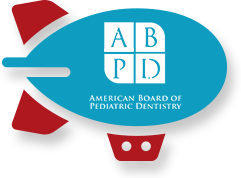Teenage Teeth: Seven Guidelines Parents Should Follow
June 19th, 2014
As children become more independent, parents often have less direct influence over their child’s oral care. The transition to adolescence means that schedules become more crowded and teens are left with more responsibility in caring for their own teeth. Too often, this results in first-time cavities and missed opportunities to catch dental issues when they are just beginning and are easiest to treat. Here are 6 guidelines to make certain your child’s dental care remains a priority through their teenage years.
1. Stock up on dental care supplies.
Teens aren’t likely buying dental supplies yet. Keep an eye on the supply of toothbrushes, toothpaste and floss in the bathroom and make sure it’s well stocked. Having the right tools goes a long way in making certain that adolescents keep brushing and flossing. Plus, who doesn’t love a new toothbrush?
2. Keep your household purchases of sodas and sports drinks to a minimum.
You can’t always control what your teens purchase when they aren’t with you. But you can make certain that your refrigerator and pantry aren’t well stocked with sugary drinks. Keeping your own purchase of sodas to a minimum will mean that they are less available when your kids want to grab a quick drink. And don’t assume that sports drinks are always the best alternative. They often contain as much sugar as soda and water is generally a better choice.
3. Say “no” to oral piercings.
While not as common as they used to be, many teenagers still want tongue and lip piercings. We strongly advise against allowing your child to have one, as piercings often cause chipped teeth and other oral issues. Further, your teen’s mouth is still growing and teeth are continuing to shift into place. Having a foreign object constantly in your teen’s mouth is likely to complicate this natural process .
4. Say “yes” to mouthguards.
As your kids become more involved in sports, so does the chance that they might suffer a hit to the mouth. More than 200,000 sports-related mouth and jaw injuries occur each year. The “inconvenience” of wearing a mouthguard for protection can’t compare to the inconvenience (and cost ) of dealing with an accident.
5. Consider an orthodontic consultation.
If your child hasn’t already been a candidate for braces, now may be a good time to see if it’s necessary. While kids (and adults) get braces at all ages, it’s certainly most common during the teenage years. We can guide you in the right direction and provide advice about your teen’s specific needs. You may be surprised at the number of options that are now available.
6. Keep an eye on good dental habits.
While your teens are becoming independent, they may still need a reminder to brush and floss regularly. There’s usually no need to constantly remind them or push too hard. A quick, “Did you brush your teeth?” is often all it takes to keep them on track especially if you started the habits of good oral hygiene when they were younger.
6. Don’t neglect regular checkups.
It can be easy to miss scheduled dental visits with the pace of raising a teenager. Continue to make regular dental visits a priority and remember that even though adolescents have bigger bodies than they used to, they are still kids. You’ll need to partner with them in making sure that dental appointments are kept. Help your teens transition into adulthood knowing that dental care is a priority.





